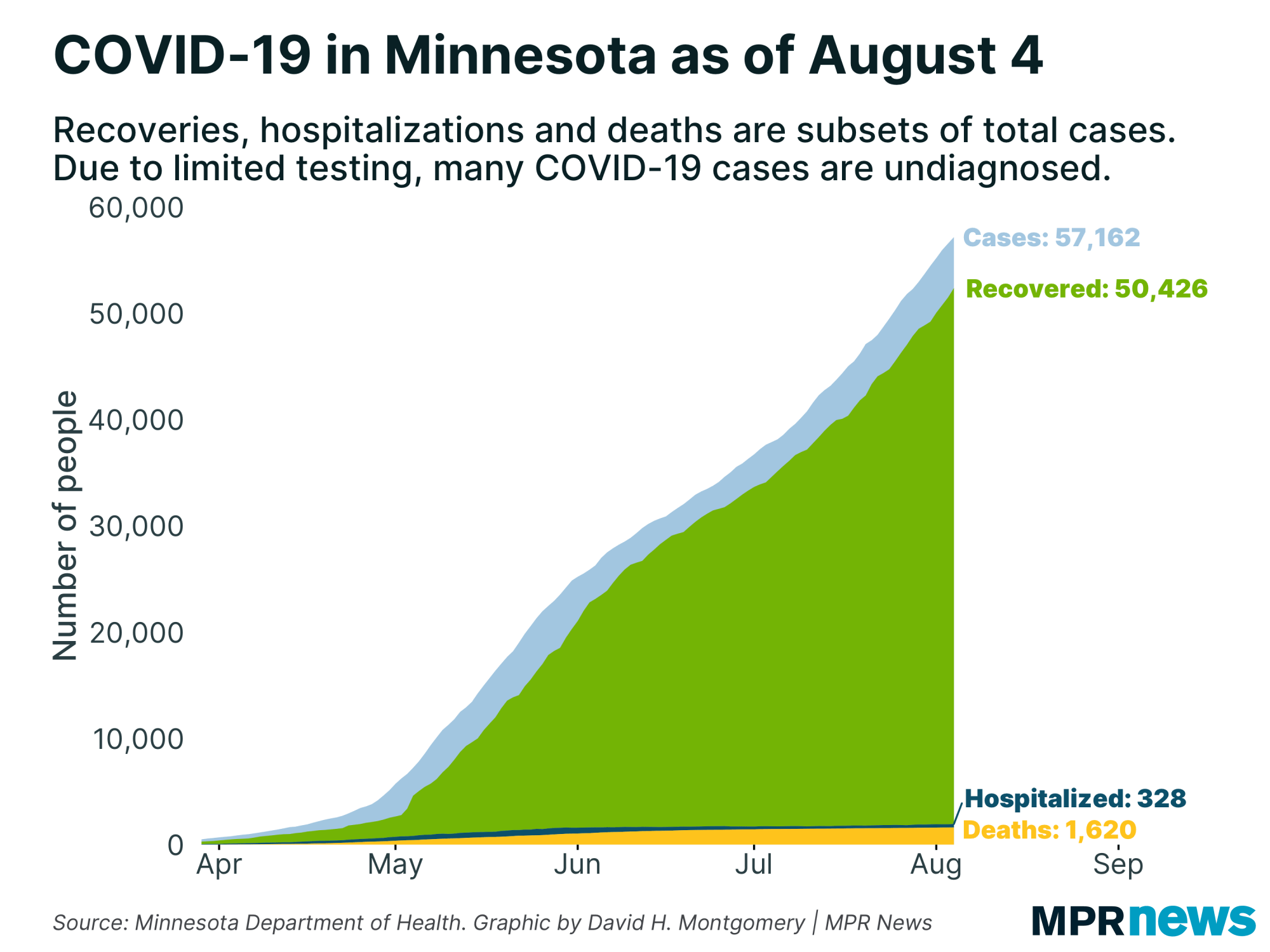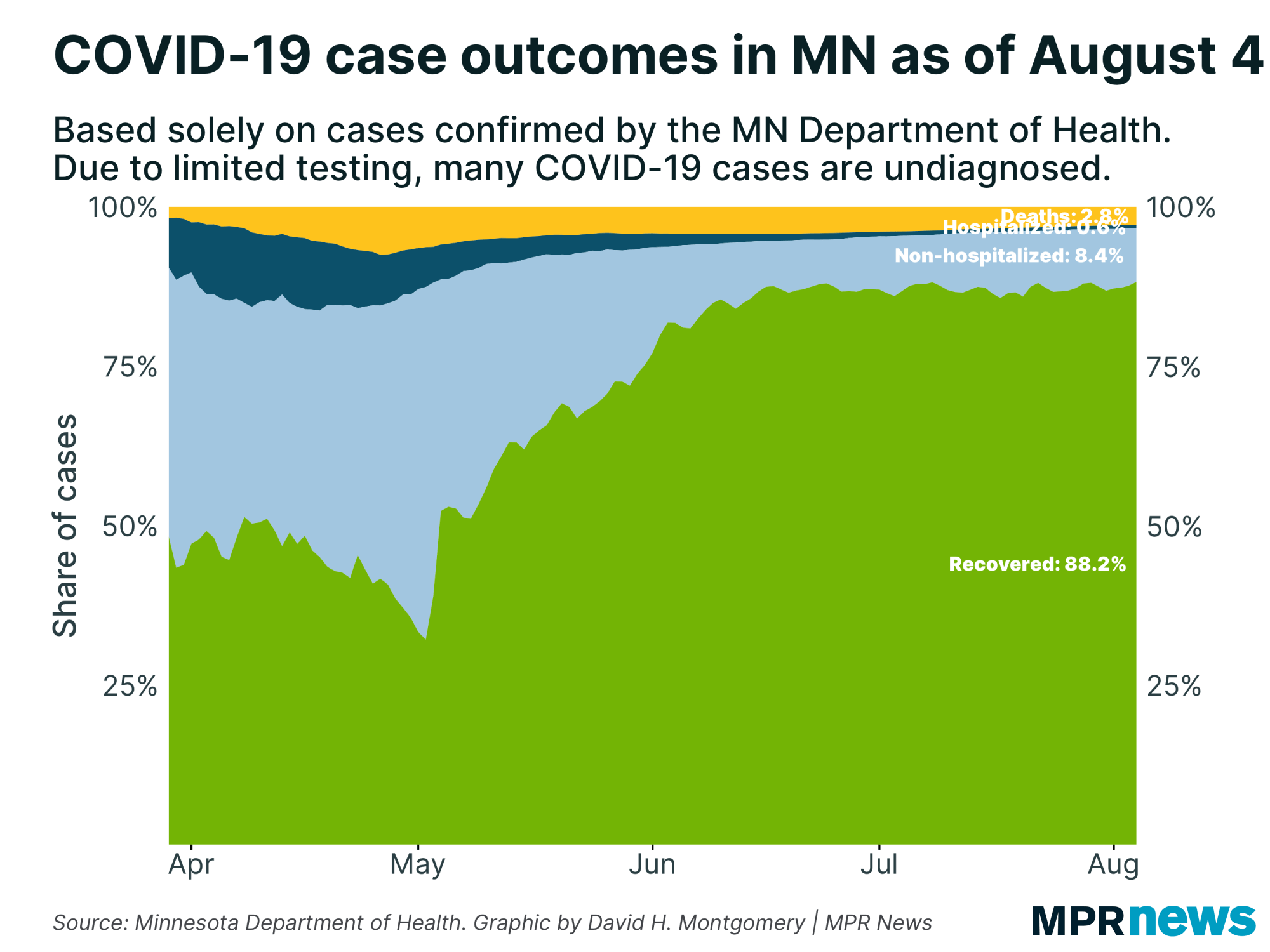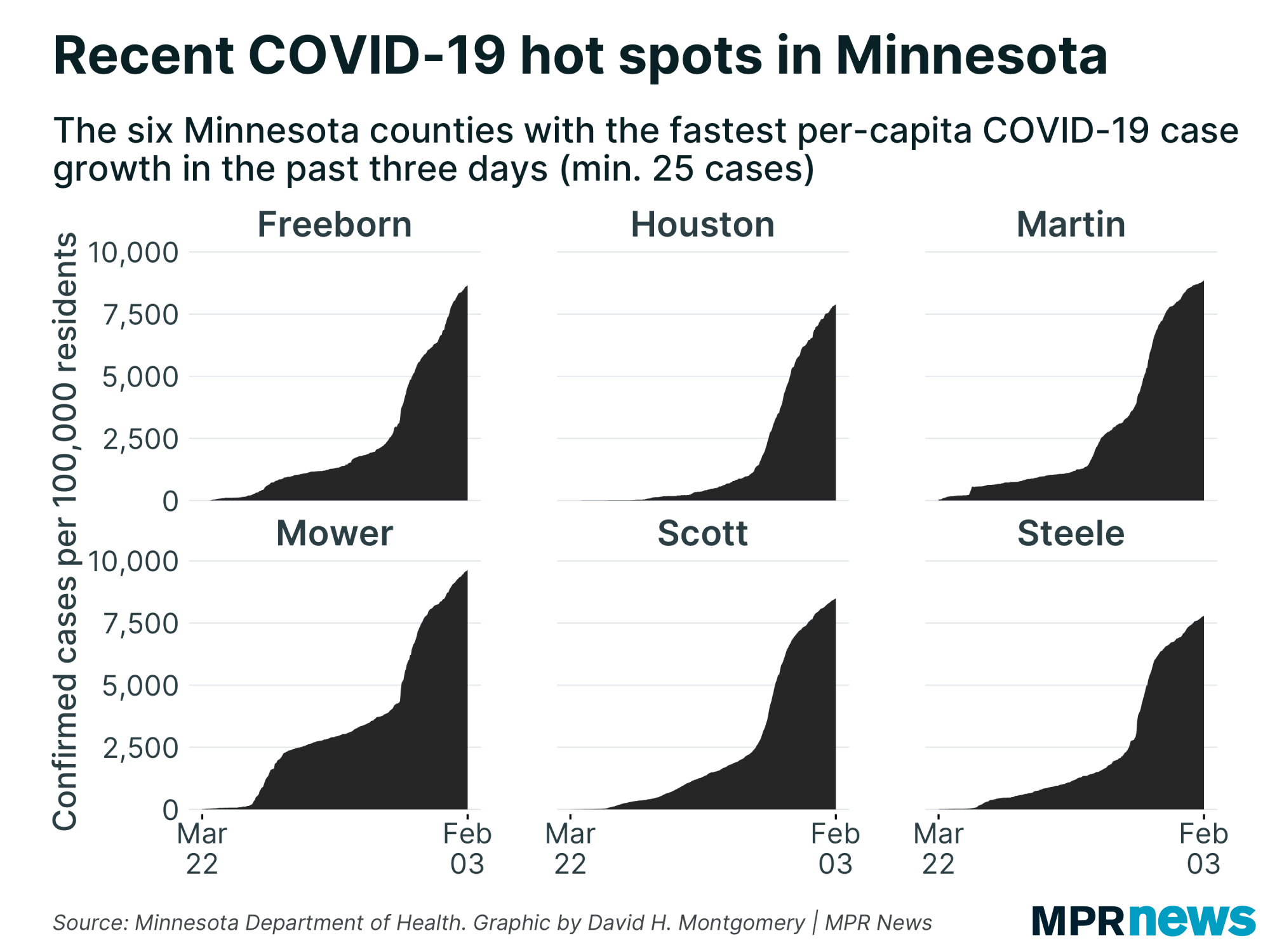June 11 update on COVID-19 in MN: 1,249 deaths; hospitalizations dip

Go Deeper.
Create an account or log in to save stories.
Like this?
Thanks for liking this story! We have added it to a list of your favorite stories.
Updated 6:25 p.m.
State health officials say 13 more Minnesotans have died from COVID-19, putting the total to 1,249 since the pandemic began. However, the daily counts of people hospitalized or needing intensive care continues to show a recent trend of plateauing.
The Health Department on Thursday reported 411 people were currently hospitalized, down 16 from Wednesday and at their lowest level since early May. There were 196 people in intensive care, roughly the same as in the past week and down to levels from about a month ago.
Current hospitalizations and intensive care cases are closely watched by state officials as they try to manage the spread of the disease so it does not overwhelm the health care system.
‘Many more months’
The newest counts come a day after a key state official cautioned the coronavirus could surge again in the fall and winter along with influenza.
Turn Up Your Support
MPR News helps you turn down the noise and build shared understanding. Turn up your support for this public resource and keep trusted journalism accessible to all.

The state’s COVID-19 response this spring to minimize indoor contact in restaurants, bars and other gathering spaces effectively eliminated the typical influenza season, Kris Ehresmann, the state’s infectious disease director, said Wednesday.
As people return to social spaces, the state is likely in the fall to face influenza and COVID-19 cycles together. “That will make it more challenging,” she said.
Health Commissioner Jan Malcolm said Wednesday the state would increasingly rely on the “good decisions” of individual Minnesotans to wear masks, keep their distance in public and take other measures to keep themselves and their neighbors safe as restrictions ease.
COVID-19 curbs took a major step back Wednesday with Gov. Tim Walz letting a host of businesses reopen — including indoor bar and restaurant service at limited capacity.
While there has been a recent, positive trend in hospitalizations and ICU cases, health officials cautioned people not to be complacent. Malcolm warned that the virus remains unpredictable and that Minnesotans should prepare for "many more months of the disease being present in our communities."

Total confirmed cases of COVID-19 in Minnesota hit 29,316 Thursday. In about 85 percent of those cases, people have recovered to the point they no longer need to be isolated.
Among the deaths, more than 80 percent involve people living in long-term care, nearly all had underlying health problems.
Meatpacking hot spots remain
Many of the outbreaks outside the Twin Cities metro area are focused around meatpacking plants. Officials have intensified testing in those hot spots, uncovering more infections.
That includes Mower County in southeastern Minnesota, where there are now more than 604 confirmed cases.
That puts Mower County second to Nobles County, where an outbreak hit Worthington’s massive JBS USA pork processing plant, in cases per capita, according to an MPR News analysis.
Mower County is home to Hormel Foods and Quality Pork Processors, both of which say they’re partnering with Mayo Clinic to ramp up employee testing.
At Hormel, officials say they anticipate that by early next week, they'll have 40 active cases among employees. They expect that an additional 39 people who've already tested positive will have recovered by then.
Quality Pork Producers has 90 employees with active cases, and 100 more who have recovered.
While some of Mower County’s positive cases are associated with people who work in the facilities and with the people they live with, county officials say they are also seeing transmission among people who live in Mower County but who work in other counties where coronavirus is present.
At the massive JBS pork plant in Worthington, about 1 in 15 people have tested positive for COVID-19. In mid-April, there were just a handful of cases.
By Thursday, there were 1,602 confirmed cases, although the increases are coming at a much slower rate than earlier in the epidemic.
The JBS plant shut on April 20 but has since partially reopened with expanded hygiene and health monitoring measures.
Similar problems have been reported in Stearns County, where COVID-19 cases tied to two packing plants — Pilgrim’s Pride poultry plant in Cold Spring and Jennie-O Turkey in Melrose — skyrocketed in May.
An undisclosed number of workers at both plants have tested positive for the virus. There were about 55 confirmed cases in Stearns County in early May. By Thursday, confirmed cases were at 2,088 with 17 deaths.
Kandiyohi County in west-central Minnesota is also seeing cases continue to climb more than a month after officials with the Jennie-O turkey processing plant there said some employees had tested positive for the coronavirus. The county had confirmed three COVID-19 cases then.
On Thursday, the Health Department reported 540 people have now tested positive in the county.
While the counts in those counties are high relative to their population, officials say the growth in new cases in those areas appears to be stabilizing.

No guidance yet on K-12 school year
Minnesota health officials this week said K-12 public school leaders should still be preparing multiple scenarios to start the school year.
Ehresmann said her agency and the Education Department are in consultation about how the coronavirus could affect the next school year. It could be midsummer before districts learn if they’ll have to continue distance learning or can reopen their buildings.
“Part of the goal is to make sure that there are options available for the fall so that there is time to plan,” she said, “so that we can be nimble if we have to make adaptations given a change in how the virus behaves.
Developments from around the state
Mayo Clinic introduces a new antibody test
A new test developed by Mayo Clinic researchers will detect neutralizing antibodies — an indicator of how well someone who has been exposed to the coronavirus can fight it off, if exposed again.
Mayo has already developed an antibody test, but it only indicates that a patient has been exposed to the coronavirus. That test doesn’t discern whether someone is immune to the virus — or for how long.
The new test will be most useful in helping doctors and researchers discern how effective a plasma donation from someone who recovered from COVID-19 will be in treating someone who is actively fighting the virus.
The test may also be useful in the development of a vaccine.
Scientists at Mayo stress the test isn’t an "immunity passport”; testing positive for neutralizing antibodies doesn't mean a patient is no longer at risk of catching the coronavirus.
— Catharine Richert | MPR News
Four COVID-19 testing sites open in Twin Cities
Four testing centers opened Tuesday in the Twin Cities to test people who were part of George Floyd protests, cleanup efforts or observing the protests for COVID-19. The centers are open for three successive Tuesdays and Wednesdays, from noon to 6 p.m.
The Holy Trinity Church on East Lake Street in Minneapolis
The Sabathani Community Center on East 38th Street in Minneapolis
The New Salem Baptist Church on Bryant Avenue North in Minneapolis
The Jimmy Lee Recreation Center on Lexington Parkway in St. Paul
The testing is free and available to anyone — with or without symptoms. Health officials are urging people who may have participated in protests, cleanup and recovery efforts, vigils, neighborhood defense meetings to be tested, and asking people to make appointments for the tests through the Department of Health website.
Health Commissioner Jan Malcolm on Wednesday said about 1,100 people were tested at those sites Tuesday. People who test negative will get an email or text within 72 hours, while people who test positive will get a phone call within 72 hours, she said, adding that more testing opportunities would be coming.
Officials said that even if someone was in a protest 14 days ago, they should still consider being tested.
— Tim Nelson and Catharine Richert | MPR News
Top headlines
Restaurants, other businesses cautiously ready to let customers in: Restaurants and other businesses opened up to indoor service Wednesday for the first time since the coronavirus pandemic shut down much of the economy in March. Some say they’re keeping expectations modest, knowing many customers will be cautious about going out.
Long Prairie beef processor among latest swept by COVID-19, despite significant prevention: The sharp rise in cases demonstrates how difficult it is to prevent the spread of a highly contagious disease amid the crowded quarters of a meatpacking plant — and in the wider community.
COVID-19 in Minnesota
Data in these graphs are based off Minnesota Department of Health cumulative totals released at 11 a.m. daily. You can find more detailed statistics on COVID-19 at the Health Department website.
The coronavirus is transmitted through respiratory droplets, coughs and sneezes, similar to the way the flu can spread.
Government and medical leaders are urging people to wash their hands frequently and well, refrain from touching their faces, cover their coughs, disinfect surfaces and avoid large crowds, all in an effort to curb the virus’ rapid spread.


